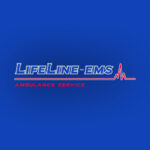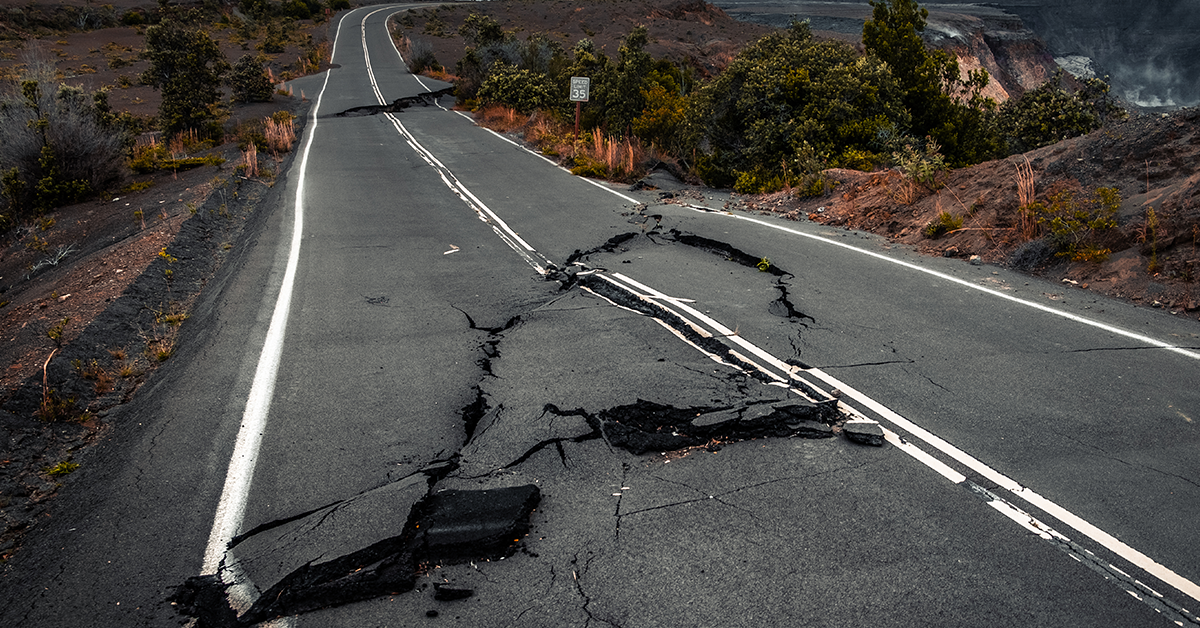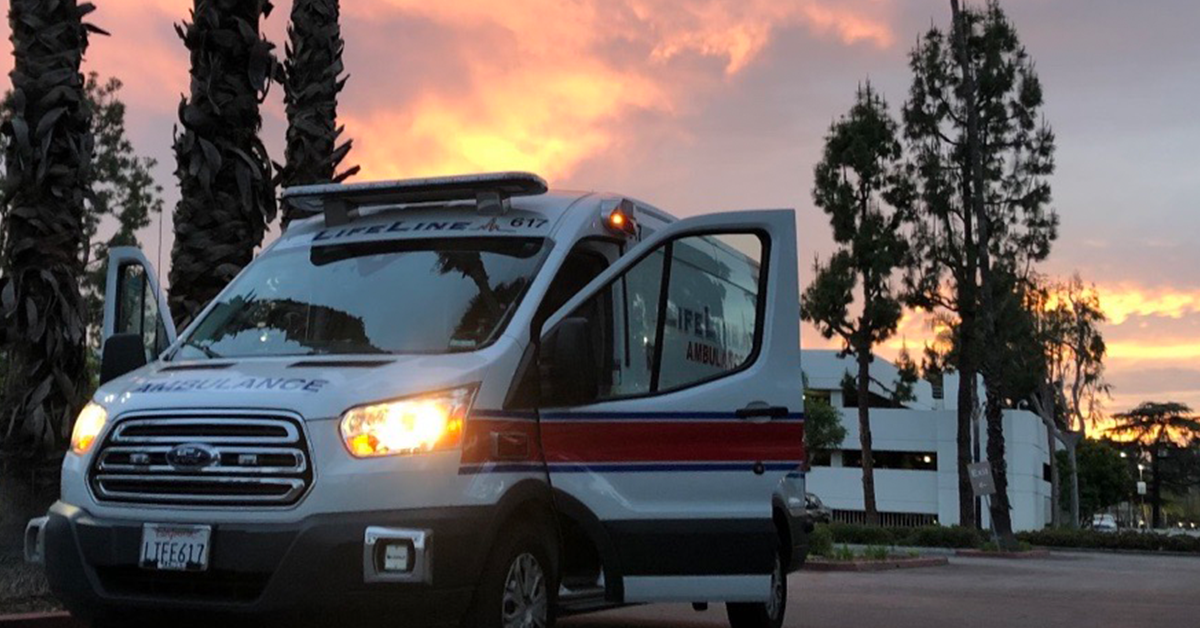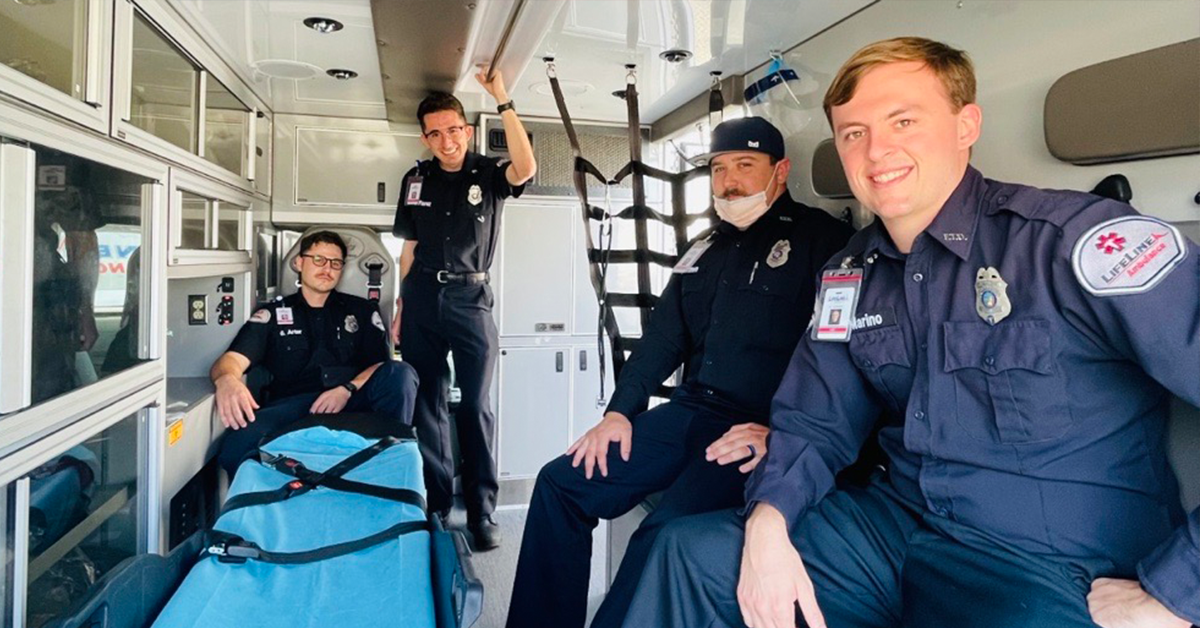Natural disasters can strike at any time, leaving communities vulnerable and in need of immediate assistance. In these critical moments, Emergency Medical Services (EMS) play a crucial role in disaster response, providing essential care and support to those affected. For those in Los Angeles and Southern California, LifeLine EMS stands as a vital component of the emergency response network, ensuring rapid, efficient, and effective medical care during disasters. This article explores the role of EMS in natural disasters and outlines how emergency responders prepare and respond to these unpredictable events.
Understanding the Role of EMS in Natural Disasters
EMS professionals are frontline responders who provide medical care, triage, and transport for those affected by natural disasters, such as earthquakes, wildfires, floods, and hurricanes. Their role is multifaceted, involving a combination of immediate medical intervention, coordination with other emergency responders, and support for the overall disaster response efforts.
Key Responsibilities of EMS During Disasters:
- Triage and Medical Care: Assessing and prioritizing patients based on the severity of their injuries or conditions.
- Rapid Transport: Safely transporting patients to hospitals or medical facilities for further treatment.
- On-Site Emergency Care: Providing lifesaving interventions such as CPR, wound care, and stabilization in the field.
- Coordination and Communication: Collaborating with other emergency responders, such as firefighters, police officers, and disaster management teams, to ensure a cohesive response.
- Public Safety and Education: Assisting in evacuation efforts, providing public health information, and supporting community safety measures.
How EMS Professionals Prepare for Natural Disasters
Preparation is critical for EMS teams to respond effectively to natural disasters. This involves rigorous training, strategic planning, and continuous collaboration with other agencies and organizations. Here are some of the key ways EMS professionals prepare:
1. Comprehensive Training Programs
EMS professionals undergo extensive training to ensure they are equipped with the skills and knowledge needed to handle a wide range of emergency situations.
- Disaster Medicine Training: Specialized courses in disaster medicine prepare EMS professionals to handle the unique challenges posed by natural disasters, such as mass casualties, limited resources, and hazardous conditions.
- Trauma and Emergency Care: Ongoing training in trauma response, advanced life support, and emergency care ensures that EMS professionals are ready to provide critical care during disasters.
- Scenario-Based Drills: Regular simulation exercises and disaster drills help EMS teams practice their response to different types of natural disasters, improving their readiness and coordination.
2. Strategic Planning and Coordination
Effective disaster response requires careful planning and coordination with other agencies, such as local fire departments, law enforcement, and public health organizations.
- Emergency Response Plans: EMS agencies develop and regularly update emergency response plans that outline specific roles, responsibilities, and procedures for responding to various types of disasters.
- Mutual Aid Agreements: EMS providers often establish mutual aid agreements with neighboring agencies to ensure additional support and resources are available during large-scale emergencies.
- Coordination with Local Authorities: Collaboration with local government agencies and disaster management organizations is essential for a unified response, ensuring that resources are allocated effectively and communication is clear.
3. Stockpiling Supplies and Equipment
Preparedness involves having the necessary supplies and equipment readily available to handle emergencies.
- Medical Supplies: EMS providers maintain a stockpile of essential medical supplies, such as bandages, IV fluids, medications, and oxygen, to ensure they are ready to treat a large number of patients during a disaster.
- Specialized Equipment: Ambulances and response vehicles are equipped with specialized equipment, such as stretchers, defibrillators, and personal protective gear, to handle the unique challenges of disaster response.
- Logistical Support: Additional resources, such as backup generators, mobile command units, and communication devices, are prepared to ensure operations can continue even if infrastructure is damaged.
4. Community Education and Outreach
EMS professionals play a vital role in educating the public about disaster preparedness and safety measures.
- Public Health Campaigns: EMS agencies often engage in public health campaigns to inform residents about emergency procedures, such as evacuation routes, shelter locations, and first aid.
- Community Drills: Conducting community-wide drills helps residents understand what to do in the event of a disaster and how to respond effectively until professional help arrives.
- First Aid Training: Offering first aid and CPR training empowers community members to provide immediate assistance to those in need before EMS teams arrive.
How EMS Responds During Natural Disasters
When a natural disaster occurs, EMS professionals must act quickly and efficiently to provide care and support to affected individuals and communities. Here are the key steps in their response:
1. Rapid Assessment and Triage
The first step in EMS response is to quickly assess the situation and prioritize patients based on the severity of their injuries or conditions.
- Triage Protocols: EMS professionals use established triage protocols to categorize patients, ensuring that those who need immediate care receive it as quickly as possible.
- On-Scene Assessment: Upon arrival, EMS teams conduct rapid on-site assessments to determine the extent of injuries and identify the most critical patients.
- Resource Allocation: Based on the initial assessment, EMS teams allocate resources effectively, ensuring that medical supplies and personnel are directed where they are most needed.
2. Providing Immediate Medical Care
EMS professionals provide lifesaving medical care at the scene, stabilizing patients and preparing them for transport to medical facilities.
- Emergency Interventions: Administering treatments such as CPR, wound care, fracture stabilization, and medication administration to manage pain, shock, or other urgent medical conditions.
- Monitoring and Support: Continuously monitoring patients’ vital signs and providing ongoing support to ensure their condition remains stable during transport.
- Field Treatment Sites: In large-scale disasters, EMS teams may set up field treatment sites to provide immediate care to a large number of patients when hospital facilities are overwhelmed.
3. Transporting Patients to Medical Facilities
Safe and efficient transport of patients to hospitals or other medical facilities is a core component of EMS response during natural disasters.
- Prioritizing Transport: EMS teams prioritize transport for the most critically injured patients, coordinating with hospitals to ensure they are prepared to receive incoming patients.
- Utilizing Multiple Transport Methods: Depending on the situation, EMS may use various transport methods, including ambulances, helicopters, or boats, to reach affected areas and transport patients safely.
- Coordination with Receiving Facilities: EMS professionals communicate with receiving hospitals and medical centers to provide patient information and ensure seamless transfer of care.
4. Collaboration and Coordination with Other Responders
EMS professionals work closely with other emergency responders, such as firefighters, police officers, and disaster management teams, to ensure a coordinated and effective response.
- Unified Command System: A unified command system is often established to coordinate the efforts of all responding agencies, ensuring that resources are used effectively and that communication is clear.
- Shared Responsibilities: EMS teams collaborate with other responders to manage evacuation efforts, provide medical support, and ensure public safety.
- Continuous Communication: Maintaining open lines of communication with other responders, local authorities, and hospitals is crucial for a successful response and recovery effort.
The Role of LifeLine EMS in Natural Disasters
For those in Los Angeles and Southern California, LifeLine EMS plays a critical role in disaster preparedness and response. Here’s how LifeLine EMS contributes to managing natural disasters:
Expertise in Disaster Medicine
LifeLine EMS professionals are trained in disaster medicine and emergency response, ensuring they are ready to handle the unique challenges posed by natural disasters. Their expertise allows them to provide critical care and support to those affected while coordinating seamlessly with other emergency responders.
Rapid Deployment and Response
LifeLine EMS maintains a state of readiness to respond quickly to natural disasters. With strategically located teams and well-equipped vehicles, LifeLine EMS can deploy rapidly to affected areas, providing immediate medical care and support.
Community Engagement and Preparedness
LifeLine EMS is committed to community engagement and disaster preparedness, offering public education programs, first aid training, and community drills to help residents prepare for natural disasters. By empowering communities with knowledge and skills, LifeLine EMS helps build resilience and reduce the impact of disasters.
Keep Reading
Want more? Here are some other blog posts you might be interested in.
Emergency Medical Services s a high-stress, physically demanding profession that requires dedication, quick decision-making, and resilience. While the rewards of saving lives...
Emergency Medical Services professionals are often the first point of contact during critical health crises. While technical expertise is essential in emergency...
Emergency Medical Services play a critical role in ensuring the health and safety of communities. In Southern California, including Los Angeles, the...






